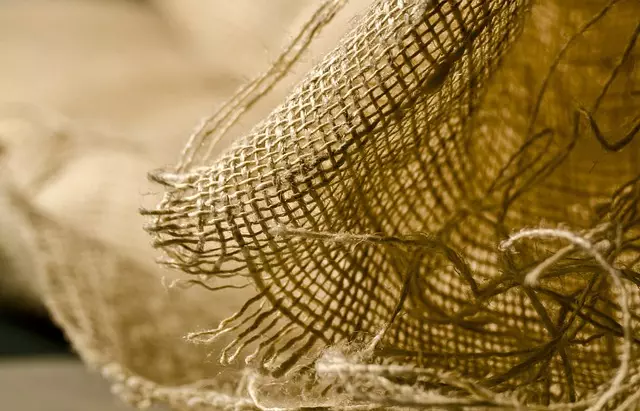To cultivate a kratom (Mitragyna speciosa) plant at home for its potential muscle soreness relief properties, you must replicate the tree's natural Southeast Asian conditions. This involves providing warm, humid environments with temperatures between 25°C and 32°C, adequate sunlight without direct exposure, well-draining soil with a pH of 5.5 to 7, and consistent moisture. Regular watering, fertilization with a balanced formula during the growing season, and pruning for a bushier growth pattern are all part of maintaining a healthy, potent kratom plant. Remember to adhere to local laws regarding kratom cultivation and use it responsibly as part of a holistic self-care regimen that includes proper nutrition, hydration, and rest. Always start with small doses and consult with healthcare professionals for medical advice before integrating kratom into your routine, especially if combining with other treatments. This ensures you can enjoy the potential benefits of this natural remedy while remaining compliant with legal standards and prioritizing personal health and safety.
Exploring the multifaceted benefits of kratom, this article delves into its potential as a natural remedy for muscle soreness relief. Known for its alkaloid content, kratom offers a promising alternative to conventional pain management strategies. We’ll unravel how these compounds function as analgesics, providing much-needed comfort to aching muscles. Additionally, for those interested in self-sufficiency and cultivation, this piece includes a detailed guide on how to grow a kratom plant, outlining the optimal conditions necessary for a robust yield. As we integrate kratom into daily routines for muscle soreness management, it’s crucial to understand both its benefits and potential risks. We’ll cover essential precautions to ensure safe use while highlighting practical tips for incorporating this natural solution effectively. Join us as we navigate the science and cultivation of kratom for effective muscle soreness relief.
- Understanding Kratom's Role in Muscle Soreness Relief
- The Science Behind Kratom's Analgesic Properties
- Cultivating Your Own Kratom Plant: A Step-by-Step Guide
- Optimal Conditions for Kratom Plant Growth and Yield
- Integrating Kratom Use for Soreness Management in Daily Life
- Precautions and Considerations When Using Kratom for Muscle Soreness
Understanding Kratom's Role in Muscle Soreness Relief

Kratom, a tropical evergreen tree native to Southeast Asia, has garnered attention for its potential therapeutic properties, particularly in alleviating muscle soreness. The active compounds found in kratom leaves, mitragynine and 7-hydroxymitragynine, are believed to interact with the body’s opioid receptors, providing pain relief effects that can be beneficial for those experiencing muscle discomfort due to exercise, injury, or chronic conditions. While the mechanisms underlying its effects are still under scientific scrutiny, anecdotal evidence and preliminary studies suggest kratom may offer a natural alternative for muscle soreness management.
For individuals interested in exploring kratom as part of their muscle soreness relief regimen, understanding how to grow a kratom plant can be advantageous. Cultivating kratom at home requires specific conditions that mimic its native environment, including warm temperatures, humidity, and well-draining soil. Proper care and maintenance are crucial for the plant’s health and potency. Additionally, it’s essential to stay informed about local regulations regarding kratom cultivation and use, as these can vary by region. Those considering growing their own kratom should also be aware of the legal status of kratom in their area, as its availability and legality differ across countries and states. Growing kratom is a complex process that demands attention to detail and commitment, but for enthusiasts seeking a hands-on approach to sourcing their kratom, it can be a rewarding endeavor.
The Science Behind Kratom's Analgesic Properties

Mitragyna speciosa, commonly known as kratom, is a tropical evergreen tree native to Southeast Asia, where it has been traditionally used for its various therapeutic properties, including analgesia. The leaves of the kratom plant contain alkaloids, such as mitraphylline and 7-hydroxymitragynine, which are thought to be responsible for its pain-relieving effects. Scientific research has indicated that these alkaloids interact with the opioid receptors in the brain, mimicking the action of endogenous opioids. This interaction can lead to significant pain relief, making kratom a potential alternative for individuals experiencing muscle soreness from various causes, including exercise or injury.
The analgesic properties of kratom are also thought to be due to its impact on neurotransmitters like dopamine and serotonin, which play crucial roles in regulating pain perception. Additionally, the anti-inflammatory effects of kratom may contribute to its ability to alleviate muscle soreness. While the mechanisms behind kratom’s analgesic effects are complex and still being researched, understanding the plant’s chemistry and pharmacology is essential for its safe and effective use. For those interested in exploring kratom as a natural remedy, it’s important to note that cultivating kratom at home can be a rewarding endeavor, provided one follows precise growing conditions, including the correct soil pH, humidity levels, and sufficient sunlight exposure. Proper care and attention can lead to a healthy kratom plant, which may yield leaves with the desired alkaloid content for analgesic purposes. However, it’s crucial to approach this topic with caution, as both the cultivation and use of kratom are subject to legal restrictions in various regions. Always consult with healthcare professionals before incorporating kratom into any wellness regimen.
Cultivating Your Own Kratom Plant: A Step-by-Step Guide

Kratom (Mitragyna speciosa), an evergreen tree native to Southeast Asia, has gained attention for its potential in alleviating muscle soreness and providing various health benefits. For those interested in cultivating their own kratom plant, understanding the intricacies of its growth is key. Here’s a step-by-step guide on how to grow a kratom plant, ensuring you can sustainably source this natural remedy.
To initiate the cultivation process, start by selecting a suitable climate for your kratom tree. Kratom thrives in warm, humid conditions with well-drained soil and ample sunlight. If you reside in a region that meets these criteria, consider planting a kratom seed directly outdoors. Otherwise, kratom can be successfully grown indoors with the right setup. Begin by choosing a container large enough to accommodate the mature size of the tree, and fill it with a high-quality potting mix that retains moisture but allows excess water to drain freely.
Once your environment is prepared, sow the seeds about half an inch deep into the soil, ensuring they are evenly spaced to prevent overcrowding as they grow. Keep the soil consistently moist but not waterlogged. Kratom seedlings require a significant amount of light; place them in a spot that receives indirect sunlight for at least six hours a day. As the plant develops, it will benefit from a gradual increase in the intensity and duration of light exposure.
As the kratom plant matures, it will begin to produce leaves that can be harvested for their alkaloid content, which is believed to contribute to muscle soreness relief. Regular pruning encourages bushier growth and higher alkaloid concentrations, which are essential for the plant’s medicinal properties. Adjusting the nutrient levels in the soil and maintaining optimal humidity and temperature will further enhance your kratom plant’s health and potency. With careful attention to its needs, you can successfully cultivate a healthy kratom plant that may offer natural relief from muscle soreness.
Optimal Conditions for Kratom Plant Growth and Yield

For those interested in cultivating a kratom plant for its leaves, which are traditionally used for muscle soreness relief, understanding the optimal conditions for growth and yield is paramount. Kratom (Mitragyna speciosa), native to Southeast Asia, thrives in environments that closely mimic its natural habitat. These plants prefer a warm and humid climate, with temperatures ranging between 25°C and 32°C during the day and slightly cooler at night. Ideally, they should be placed in a location where they can receive dappled sunlight or indirect light for approximately six to eight hours daily to avoid sunburn on the leaves.
Kratom plants are particularly sensitive to changes in their environment, especially when it comes to water and soil conditions. The soil should be well-draining and rich in organic matter, with a pH between 5.5 and 7. Consistent moisture is crucial, but care must be taken to avoid overwatering, which can lead to root rot. Regular feeding with a balanced fertilizer during the growing season can enhance yield, as kratom is a voracious feeder. Additionally, pruning mature plants can encourage bushier growth and increased leaf production, which is beneficial for those seeking higher yields of leaves for muscle soreness relief. With meticulous care and attention to these specific conditions, cultivators can successfully grow kratom plants and potentially harvest the mature leaves for their desired effects.
Integrating Kratom Use for Soreness Management in Daily Life

Integrating Kratom use for soreness management can be a valuable addition to daily life for those seeking natural alternatives to pharmaceuticals. Kratom, a tropical evergreen tree native to Southeast Asia, has been traditionally used in its indigenous regions for pain relief and energy enhancement. When considering the cultivation of kratom plants, it’s crucial to understand their specific environmental requirements. Kratom thrives in well-drained soil with consistent moisture and partial sunlight. Prospective growers should aim to replicate these conditions as closely as possible to ensure healthy plant growth. The plant’s leaves contain alkaloids, primarily mitragynine and 7-hydroxymitragynine, which are believed to contribute to its pain-relieving properties. By growing kratom at home or in a controlled environment, individuals can have a consistent supply of the plant for personal use. It’s important to adhere to local laws and regulations regarding kratom cultivation and consumption, as legality varies by region. For those experiencing muscle soreness, integrating kratom into a self-care regimen may offer relief. However, it should be used judiciously and in conjunction with other holistic practices such as proper nutrition, hydration, and rest to ensure overall well-being and to complement the pain-relieving effects of kratom. Those new to kratom use should start with smaller doses and consult with a healthcare professional before making it a regular part of their soreness management plan. Additionally, combining kratom with other therapeutic modalities like physical therapy or massage can enhance its efficacy in addressing muscle soreness. With careful consideration of its cultivation and responsible use, kratom can be an effective adjunct for those seeking to alleviate daily aches and pains.
Precautions and Considerations When Using Kratom for Muscle Soreness

When incorporating kratom into a regimen for muscle soreness relief, it is imperative to approach its use with caution. Kratom, derived from the Mitragyna speciosa tree, has been recognized for its potential analgesic properties, which may aid in alleviating discomfort associated with muscle soreness. However, due to its interaction with opioid receptors, it is critical to exercise moderation and to be fully informed about its effects and legal status in your region. Users should start with a low dosage to gauge individual sensitivity, as the plant’s alkaloids can have varying intensities and durations of effect. Additionally, those interested in cultivating their own kratom plants, as a sustainable and cost-effective approach, should be aware that growing kratom requires specific environmental conditions, including humidity, temperature, and soil composition that mimic its native habitat in Southeast Asia. Prospective growers must also navigate the legal complexities surrounding kratom cultivation and possession to ensure compliance with local laws. Regular consultation with healthcare professionals is also advisable, especially when combining kratom with other medications or therapies for muscle soreness. Attention to these precautions and considerations can help users safely explore the benefits of kratom for muscle soreness relief while respecting legal boundaries and maintaining personal well-being.
Muscle soreness can be an inconvenience and a barrier to maintaining an active lifestyle. The exploration of kratom as a potential remedy for alleviating this discomfort has shed light on its role as a natural analgesic. Understanding the science behind kratom’s properties has provided insight into its efficacy, which is further supported by practical guidance on cultivating your own kratom plant through a detailed step-by-step process that emphasizes optimal conditions for growth and yield. Integrating kratom use responsibly into daily routines for soreness management offers a promising alternative to traditional pain relief methods. However, it is crucial to approach its use with caution, considering the legal status and potential side effects as outlined in the article. By understanding both the benefits and limitations of using kratom, individuals can make informed decisions about incorporating this plant into their wellness regimen for muscle soreness relief.






